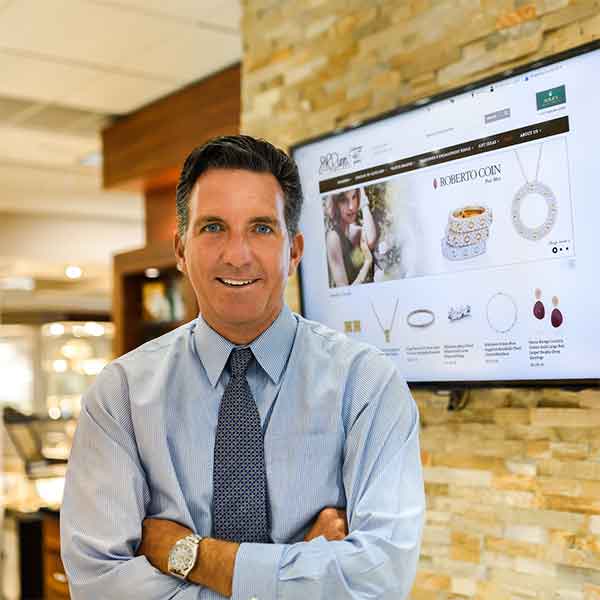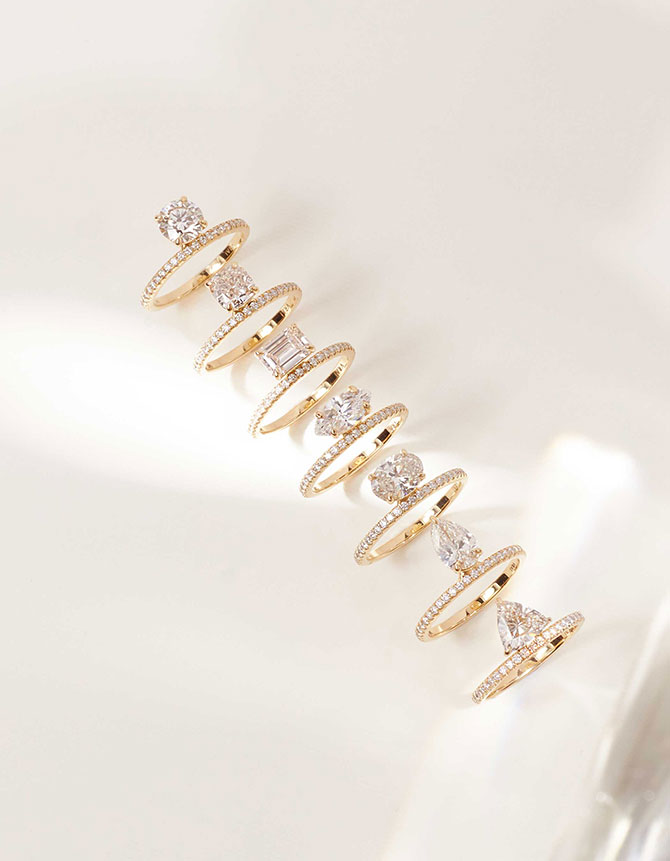
Sean Dunn, co-owner and vice president of J.R. Dunn Jewelers, a family business based in Lighthouse Point, Fla., is the first to admit that he’s no expert in lab-grown diamonds. “We’ve dabbled in them,” he says.
But two years ago, he began advocating for the category, persuading his father, Jim Dunn, to add the man-made gems to the store’s traditional fine jewelry offerings. At last year’s JCK Las Vegas show, the Dunns began to stock up.
“I, personally, wanted to carry them, along with my web team, who happens to be very young, in their 20s,” Sean Dunn says. “It took a while. Our preference, as fine jewelers, is natural diamonds. But we have younger associates. What’s it going to cost us if we market lab-growns? It’s not going to cost us anything.”
Last week, just a day after closing the store and transitioning to a by-appointment-only model, Sean Dunn spoke to JCK about his biggest takeaways for newcomers to the category.
On the Pros and Cons of Lab-Grown Diamonds
“My dad and I did a radio ad at the end of last year. We were having a conversation back and forth with my dad saying, about natural mined diamonds, ‘I think those are the real ones,’ and I was saying, ‘Yeah, but you can get a big one for the same money.’ In the ad, he said, ‘We have a 100% trade-up policy with natural diamonds.’ And I said, ‘You can buy one big enough that you won’t have to trade up.’ ”
On Lessons Learned From a Radio Campaign About Lab-Growns
“At the end of the radio campaign, we invited people to compare them side by side and choose the best one that will fit their needs. We wanted to make sure we were there for our clients. It had a lot of positive reaction and started a lot of conversations.
“We sold some lab diamonds, but what we found through running these ads and pushing it through our local search is that people who were set on buying lab diamonds came in and bought. They were already preformed. So we instructed our team not to argue with them. But we had to let people know we’re not trading lab-growns up like we are natural diamonds because in all candor, we’re not sure if those values will hold up. People who liked that were the ones who were considering both; for them, it was a more relevant conversation. Rarely did they switch to a lab-grown. The main thing was letting people know we carry it and not to expect people to switch.”
On Lab-Grown Diamonds’ Eco Standing
“We thought people buying lab-growns are doing it for environmental reasons or social responsibility reasons—though we know from our own research that that logic is highly debatable, if you look at carbon footprints versus what’s happening in countries that produce diamonds and whose people rely on that for their income, schools, water supply.
“For those very reasons, we said, ‘Let’s go with the only certified carbon- neutral lab-grown diamond brand, Diamond Foundry.’ They had beautiful imagery and great things on their websites. But one company never has all you’re looking for. So you end up sourcing from Stuller and others. We’re trying to have Diamond Foundry as our flagship.”

On Lab-Growns for Bridal Versus Fashion Jewelry
“I’ve seen it primarily as a bridal category. That said, I’ve been pounding on Lightbox’s door since day one—I want to be their first independent jeweler, but no luck yet.”
On Marketing the Category Online
“You can see on our website, we have a fairly good representation. Go into the Diamonds section, and you have a choice between lab-grown or natural diamonds. We do expose it pretty heavily, but I thought we’d do better than we have. We’re a fairly high-end store—I’m not saying lab-grown is a low-end product at all—but our customer always seems to steer more traditional. Our idea is we want to grow our next generation of customers. That’s why we want to do it.”
Top: Sean Dunn of J.R. Dunn Jewelers
Follow JCK on Instagram: @jckmagazineFollow JCK on X: @jckmagazine
Follow JCK on Facebook: @jckmagazine
Subscribe to the JCK News Daily
Subscribe to the JCK Special Report